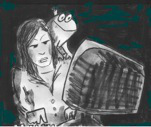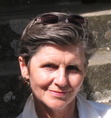Anne Whitaker's Blog, page 30
February 5, 2014
Support for all women whose male partners have the SAF gene
It is now February, thank goodness, and I have decided to cheer myself and 50% of my Followers up by publishing (with her permission) my correspondence with a female friend last year. When you get to the end of the post, I will reveal to you all what the SAF gene is – then go and duck behind our hedge from the other 50%, for reasons which will be obvious by then!
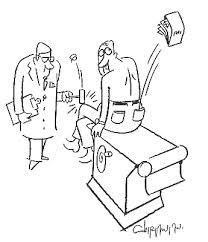
Constructive engagement with doctor….
From me to Lizzie
Hi Lizzie
Ian (my husband) was out by 1530 on the day of the (knee) op on Wednesday, and after a rough 36 hours is better today and already walking better than before. Various friends have offered to sit on him on a rota basis…..it is very trying, getting him to lie down to anything. Maybe you have a sensible husband when it comes to health matters….if so, you are in a very small minority, believe me.
Thanks so much for your concern. Everyone has been so kind.
Love
Anne
From Lizzie to me later that day….
Hi Anne,
well that is a relief – the worst bit is over and the trying bit is now to come – my husband is exactly the same. I don’t think many men are good at staying still but you will have to take his sticks away!
My aunt (in Holland) told me an amazing (true) story about wifely control – she (aunt) was on a bus and the lady next to her offered her some sweets in a brown paper bag. Aunt looked in the bag to choose a sweet and saw a pair of false teeth among the sweets.
“Don’t worry about those” says the woman “ They are my husband’s but I make him take them out when I go shopping because otherwise he will eat all the meat in the fridge while I am out!”
So taking Ian’s sticks or shoes or trousers or something so he remains confined to bed or chair can’t be worse than that!!!
Anyway, hope his recovery will be steady and good!
Love
Lizzie
….and the SAF gene? Friend Lizzie was visiting her chiropractor, and complained to him about her new son-in-law. ‘He runs himself ragged’, she sighed. ‘he just doesn’t rest or look after himself properly.’
‘Well’, said the young male chiropractor gravely, with a totally straight face. ‘Sounds as if he has that SAF gene which has been identified in the DNA of a surprising number of men.’
‘What’s that?’ asked Lizzie.
‘The Silly As Fuck gene’, he replied.
I’m still laughing about it, as I hide behind the hedge…..
450 words copyright Anne Whitaker 2014
Licensed under Creative Commons – for conditions see Home Page
*******************************
Filed under: 01 - New Posts: January 2014 onwards, Health and Wellbeing (article archive), Humour - video clips etc Tagged: chiropractor, false teeth, Holland, knee surgery, men and health, wifely control


January 22, 2014
Dust yourself down – Spring’s not far off….
In my current January mood, as I sit here in my life, grumpy, with a metaphorical blanket pulled over my head, my spirit decidedly in need of dusting, these words from well-known writer, broadcaster and former Bishop of Edinburgh, Richard Holloway speak powerfully to me: I offer them to my fellow January-ites out there, with the thought that the snowdrops are already proliferating cheerfully in our local Botanic Gardens….
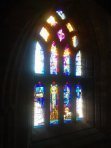
St Magnus Cathedral Window, Orkney
photo: Anne Whitaker
“This is my dilemma. I am dust and ashes, frail and wayward, a set of predetermined behavioural responses, … riddled with fear, beset with needs…the quintessence of dust and unto dust I shall return…. But there is something else in me…. Dust I may be, but troubled dust, dust that dreams, dust that that has strong premonitions of transfiguration, of a glory in store, a destiny prepared, an inheritance that will one day be my own…so my life is spread out in a painful dialectic between ashes and glory, between weakness and transfiguration. I am a riddle to myself, an exasperating enigma…this strange duality of dust and glory.”
***************
(NOTE: Having googled this quotation, I discovered that it has got around, and some of the wording varies slightly depending on who is quoting! So I hope Richard Holloway will forgive me any minor errors which may appear in this version, whilst I track down the exact quote, in the precise book in which it appears….)
Richard F. Holloway (born 26 November 1933) is a Scottish writer and broadcaster and was formerly Bishop of Edinburgh in the Scottish Episcopal Church. To read more about him and his writing, click HERE
*******************************
300 words copyright Anne Whitaker/Richard Holloway 2014
Licensed under Creative Commons – for conditions see Home Page
*******************************
Filed under: 01 - New Posts: January 2014 onwards, Favourite Quotes (archive) Tagged: Bishop of Edinburgh, dust and ashes, Richard Holloway, Scottish Episcopal Church, St Magnus Cathedral Orkney


January 17, 2014
That toad, writing: still here after all these years….
Well, it’s clear from a number of emails and a few comments received, that “Why must that toad, writing, squat on my life?“- part one - hit the spot with a number of fellow writers! My favourite story for luring the reluctant writer to the toad-dominated desk was the one about the luscious bacon sandwich, all crispy with lashings of butter on extremely tasty sourdough bread, made the night before and left, wrapped in foil, sitting on the laptop as an irresistible morning bribe. Try it!
( yes, maybe there is a vegetarian option.Just haven’t come up with it yet….)
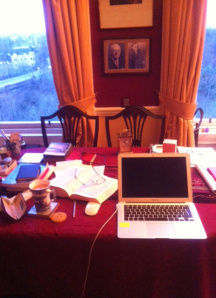
My Writing Cave
photo: Anne Whitaker
Now, as I was saying….
For the first seven years of self-employment, my writing skills were channelled and honed some more. I wrote case notes for my counselling and astrology client files, confidential reports for GPs and psychiatrists, and endless handouts for my assertiveness training courses and astrology classes. Students were presented in every class with flurries of A4 sheets in a rainbow of colours. Goodness only knows what they did with them all.
“ You should be an English teacher, or a writer, Anne,” said a student one day.“ This astrology lark obviously doesn’t fulfill your literary side!”
“ Thanks for a very helpful and illuminating suggestion,” was my sarcastic reply.
By the early nineties, the writer in me must have decided that hiding her light under a bushel of other professional pursuits was no longer sufficient. In 1992 I had my first submission for many years accepted and published by a feisty new Scottish feminist magazine called Harpies and Quines ( their name briefly got them into a fight with Harpers & Queens!)
Between 1992 and 2001 I had some forty pieces of journalism, articles and essays published in a wide range of magazines, journals and newspapers from The Mountain Astrologer(USA) to Scotland’s award winning newspaper The Sunday Herald. I was the agony aunt in their “Mindworks” supplement during the summer of 1999.
Then, at the end of 2001 I keeled over completely following a prolonged family crisis which triggered a menopause from hell. My sabbatical was mandatory; for months I could barely get out of bed. Life was a matter of surviving not merely from one day to the next but from hour to hour, racked as I was by acute anxiety, flushes, palpitations, chronic insomnia and exhaustion – all brought on by burnout and a severe hormone imbalance.
Did this shut the writer up? Not a bit of it. For the first six months, as a central plank in my sanity-saving strategy, I kept a daily ‘Gratitude Journal’. No matter how bad the day had been, each night I wrote down six things for which I was grateful, no matter how small.
For nearly two years I kept an imagery journal, to record the astonishing guiding imagery which arose spontaneously without any conscious intention or effort on my part. I still keep a brief daily diary and a weekly perspective journal.
Nine months after collapsing, I felt able to stagger into my office one or two afternoons a week. The very slow completion of my first book over the next year gave me a creative focus, which was a huge help in the protracted process of recovery. The book is titillatingly titled “Jupiter meets Uranus: from erotic bathing to star gazing“– but is in fact a research study of the individual and collective manifestations of the 1997 Jupiter Uranus planetary conjunction, set in its mythological and historical context. It was published by the American Federation of Astrologers in April 2009.
I had a variety of articles on various topics published during 2001-7, and spent much of 2007 completing the first draft of “Wisps from the Dazzling Darkness: a sceptic’s take on paranormal experience”, a memoir and rational analysis of thirty years’ intermittent (and not very welcome) paranormal experiences. Then came the setting up of this blog, which to my great amazement has now been going for over five years.
I serialised “Wisps from the Dazzling Darkness“ on the blog from 2o10-12. It was so well received and commented on that I decided to publish it as a downloadable pdf. Note: available now!
And then, last year, under the spare bed in my husband’s study gathering dust, I found the manuscript of a children’s poetry book I had written thirty five years ago which was beautifully illustrated by an artist friend, Albert Ennemoser. Then, publishers loved it but said “Sorry, it would be too expensive to publish”. So we forgot about it and got on with life.
Now, thanks to the web – and digital printing – “Rumbold Raven’s Magic Menagerie” , eighteen short poems featuring an eccentric, colourful assortment of animal characters: Dorelia the extinct Dodo, Feeble Fred the dozy frog, delightfully dreamy Salome Seahorse, and wellyboot-wearing Tiger Tigbaloo to name but a few, is now published.
Its first well-received incarnation is in pdf form, available from this blog. Hopefully, the print version will be out very, very soon, courtesy of BookViral. I am really looking forward to that! And so is granddaughter Lola, the inspiration for the book’s resurrection, to whom the book is dedicated.
And what next? Well, I have a few ideas bubbling away. The toad is croaking seductively in my left ear, even as I write…..I don’t think he will ever go away…..would I want him to? What do you think?
900 words copyright Anne Whitaker 2014
Licensed under Creative Commons – for conditions see Home Page
Filed under: 01 - New Posts: January 2014 onwards, Writers and Writing Tagged: 'The Mountain Astrologer', English teacher, Gratitude Journal, Harpers & Queens, Rumbold Raven's Magic Menagerie, the reluctant writer, The Sunday Herald, Wisps from the Dazzling Darkness


January 9, 2014
Why must that toad, writing, squat on my life?
I hope you find this outline/cautionary tale of a writer’s life entertaining. No doubt it will have more than a few resonances for other members of the writing community, whose careers and writing paths have most likely had their own peculiar turns and twists! Your comments/anecdotes are welcome.
That Toad Writing
image by Paul F Newman: pneuma@ukonline.co.uk
The poet Philip Larkin asked : “Why should I let the toad work Squat on my life?”
How I empathise! That toad, writing, has squatted on my life more or less since I was born.The golden thread of consistent attachment to writing, or writing’s consistent attachment to ME, has run through the whole of my life. I have always been true to it, in my fashion, during the promiscuous twists and turns of my vocational quest.
At school, whilst other kids seemed to dread their composition ink exercises, I looked forward to mine. It was an opportunity to channel into focused black and white the swirling imaginative colours which whirled round my young brain, fed by my six library books a week habit. I read anything and everything.
This voracity had its downside. Victorian novelist H Rider Haggard’s myth-steeped descriptions of his characters’ adventures in Africa last century fascinated me. But da Silva, the Dutch explorer whose frozen body was found centuries after his death in a cave high up Mt. Kilimanjaro, transferred himself from “King Solomon’s Mines” to the wardrobe in my bedroom, on and off, for a couple of years. Getting to sleep was no mean feat with an imagination like mine!
King Solomon’s Mines First Edition
My ‘real’ life – eating, sleeping, going to school – was incidental to my inner life which was full of the really interesting questions:
“Why are we alive, where do we go after death, do we live on several planes of existence at once, what is happening in other galaxies, if there are x million Catholics and even more Buddhists and Hindus, how come they are all Wrong and Damned and a few thousand members of the Free Church of Scotland are Right and Saved?
What would happen if you unwrapped an Egyptian mummy? I wonder if I could make a shrunken head like the Jivaro people? Why did people paint pictures on cave walls thousands of years ago? “
These issues, fed by reading, preoccupied me for years. I must have written about them, and my essays were often commended. However, attempts on leaving school to obtain my childhood exercise books were met with a bureaucratic “No” .
During my twenties, spent in further education teaching, I had a‘Personally Speaking’ column in a well-known provincial Scottish island newspaper, a copy of which I was reliably informed went to the British Embassy in Peking in China every week.
I also wrote for the local paper in a small industrial town in West Lothian, Scotland, where I had my first English lecturing job in the local technical college. ‘How I was left on the shelf – and found true happiness’ was my contribution to the West Lothian Courier’s Spring Brides Feature one year. “Couldn’t you have been a bit more romantic ?” was the Editor’s only comment.
Harrowed in my mid twenties by the realisation that time was speeding on apace without my having yet written an autobiography, I then began the first of what were to be many bouts of journal-keeping.
In my next college job, I became obsessed with writing handouts on literature and effective language use, inspired by a male colleague who also loved writing handouts for his students. I fell in love with him. My energies moved from sending my work out for publication, to staying in at night and juggling passion with passionate handout composition. The ‘Personally Speaking’ column was stoical in the face of my neglect.
There were other diversions, leading to my final college job before sacrificing all for my art. I was living in Bath in England – where, incidentally, I met a strange little man in a launderette who drew up my horoscope and predicted yet another career, as an astrologer. Hmmmm, I thought….Just before leaving that college to return to my native island to Be A Writer, I had a very scary encounter with a man who might have been a murderer. This became the subject of my first play.
The years in social work honed my writing skills further – writing reports was a central part of the job. Adoption assessments, fostering assessments, Children’s Panel reports, social enquiry reports for the courts: I happily turned my hand to them all, gaining a degree of notoriety amongst my colleagues. They usually hated writing reports. I loved it.
“ Look at Anne,” my first boss used to say, as I hid out in a corner of our open plan office, trying to find some peace to compose my latest masterpiece. “ She is seriously weird. You’d think she was Franz Kafka, the way she crouches over that bit of paper!”
To be continued….
******************************
850 words copyright Anne Whitaker 2014
Licensed under Creative Commons – for conditions see Home Page
******************************
Filed under: 01 - New Posts: January 2014 onwards, Writers and Writing Tagged: Egyptian mummy, Franz Kafka, H. Rider Haggard, Jivaro people, Philip Larkin, West Lothian Courier


January 7, 2014
Starting the year: “After the Ecstasy, the Laundry” – a favourite book
This book, a timeless spiritual classic, is a moving and fascinating account of how the contemporary spiritual journey unfolds, with all the difficulties those choosing such a path must face, whatever the depth of their faith, its religious context, or their position in the world.
During my own ‘dark night of the soul’ period of 2001-8 I returned to this book several times, never failing to derive comfort, support and strength from what author and Buddhist teacher Jack Kornfield had to say. I continue to feel gratitude for his wisdom. Do read my review, let me know what you think, and give yourself a new year treat of acquiring a copy. And by the way, fellow writers reading this, what a brilliant title, don’t you think?!!
After the Ecstasy, the Laundry
How the heart grows wise on the spiritual path

My Review:
How’s this for an image of unity and diversity ? “While helicopter gunships flew by and (the Vietnam) war raged around them, Buddha and Jesus stood there like brothers….their arms around each other’s shoulders, smiling….”
In his first best-selling book on meditation “A Path with Heart”, American Buddhist teacher Jack Kornfield describes the powerful impact of his first sight of two massive sixty-foot tall statues of the Buddha and Jesus on a small island of the Mekong Delta. “After the Ecstasy, the Laundry” is its worthy and equally inspiring successor.
Kornfield has a deep well of experience to draw from: a Buddhist monk in the late Sixties in Thailand, he has since lived with and taught with monks, mystics, students and teachers from many religious traditions in different parts of the world. He also holds a PhD in clinical psychology and practises as a psychotherapist and meditation teacher.
The book is a moving and fascinating account of how the contemporary spiritual journey unfolds, with all the difficulties those choosing such a path must face, whatever the depth of their faith, its religious context, or their position in the world.
He accounts for the universality of spiritual longing very simply: “There is a part of each of us that knows eternity as surely as we know our own name. It may be forgotten or covered over, but it is there….there is a pull to wholeness, to being fully alive….as surely as there is a voyage away, there is a journey home”…and (quoting the poet Rumi) “Grapes want to turn to wine”.
He makes it clear that there is no separate territory labelled “spiritual” to which the devout may escape; spirituality is doing the dishes and dealing with difficult relatives, as well as moments of winter sunlight illuminating the beauty of a cathedral’s stained glass windows, evoking joy in the presence of the Holy Spirit.
Following the spiritual path means making slow peace with the tedious reliability of human imperfection, as we move through the Great Round of living and dying with its inevitable sorrows – and capricious joys.
Many quotations, illustrating the profoundly personal and moving facets of a wide range of journeys from diverse traditions including Christianity, reveal the author’s deep respect for all paths to the Source.
The case material truly makes this book live, letting us see that however unique our particular route may be, the spiritual journey has core stages common to all seekers of all faiths. In our own strivings, he shows us, we are not alone.
It is so heartening and illuminating to read of different seekers’ experiences of the ecstatic: when grace calls forth that sudden falling into radiance, that recognition of indivisibility from Being, or God, or Ultimate Reality, or Emptiness (or the quantum vacuum, if like me you’ve been reading way too many cosmology books of late!).
But there is always the return to The Laundry, that inevitable and often painful coming down to the ordinary, sometimes grubby and unsatisfactory basics of everyday life.
Importantly, he also points out that for many, ecstasy never comes in a dramatic manner, but as a slow, steady deepening of compassion, wisdom and an increasingly peaceful heart – that which is the eventual fruit of sincere and dedicated spiritual practice.
Kornfield writes beautifully, in an honest, open-hearted, humorous and well-earthed way. His book radiates integrity and is obviously rooted in his own long and at times hard struggle to find the spiritual ground of his own being. Just the right degree of personal disclosure makes clear his lack of illusion that being a priest, or a teacher, or a healer of whatever sort, is any kind of vaccination from the pitfalls of the human condition.
Jack Kornfield comes across as a reflective, wise and humble man. Let’s hope that the worldwide success of his books has not changed that! “After the Ecstasy, the Laundry” is a timeless treasure, a wonderful companion along the road.
******************************
800 words copyright Anne Whitaker 2014
Licensed under Creative Commons – for conditions see Home Page
******************************
Filed under: 01 - New Posts: January 2014 onwards, Book Reviews 2014 Tagged: After the Ecstasy the Laundry", all paths to the Source, Buddhist Teachers, Emptiness, Jack Kornfield, the poet Rumi, Ultimate Reality


January 4, 2014
Some wisdom to begin the year: from Welsh poet R.S.Thomas
I am gazing through our wide bay window towards the shadowy hills, as city lights illuminate a cold, rainy early January night. That window, come Monday and Epiphany, will be very bare: our magical nine-foot tree will be no more. Where will all its jewels of multi-coloured reflection go? Back to the ‘Otherworld’, the Romantic in me thinks. Waiting, waiting for another year……
To distract myself from this post-Festive melancholy, I start tidying my workroom – and find a different kind of jewel. In the wonderful poetry anthology sent to me from Zane, the charity which does such sterling work in Zimbabwe, I come across a poem which perfectly fits my mood: a reminder that moments of transitory joy in life, fleeting as they are, are to be cherished –
Let us not rush through 2014 so much that we forget to pause, to notice, should a fleeting glimpse of the brightness of Eternity come our way….
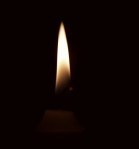
A fleeting light…..
The Bright Field
I have seen the sun break through
to illuminate a small field
for a while, and gone my way
and forgotten it. But that was the
pearl of great price, the one field that had
treasure in it. I realise now
that I must give all that I have
to possess it. Life is not hurrying
on to a receding future, nor hankering after
an imagined past. It is the turning
aside like Moses to the miracle
of the lit bush, to a brightness
that seemed as transitory as your youth
once, but is the eternity that awaits you.
(From Laboratories of the Spirit, published by MacMillan. © Kunjana Thomas)
******************************
300 words copyright Anne Whitaker/R.S. Thomas 2014
Licensed under Creative Commons – for conditions see Home Page
******************************
Filed under: 01 - New Posts: January 2014 onwards, A New Year begins.... Tagged: Festive melancholy, Otherworld, R.S. Thomas, ZANE, Zimbabwe


December 24, 2013
Winter Nights – a Christmas meditation
The beautiful solstice poem by Susan Cooper which I shared in my last post, and which proved a very popular read, has got me reflecting on winter, this Christmas Eve. It is wet and windy in Glasgow tonight, neither very cold nor very seasonal. But the daffs and snowdrops’ green shoots are peeping though. They know that spring isn’t far away!
But in the meantime, we need winter. We need the dark. Within the year’s natural cycle, the diurnal alternation of light and dark brings restful silence at night and the restorative power of sleep, without which all creatures including us would burn out and die before their time.
We are in danger of forgetting this – at our peril – as an increasingly technology-driven culture sweeps the world, creating the illusion that we can live sustainably and healthily in defiance of the ancient rhythms set by the great cycles of nature.
On the Scottish island where I grew up, however, nature was omnipresent. One snowy winter’s dusk, I failed to return home from primary school. A snowstorm was blowing up with a fierce gale. Worried, my mother sent out a search party who found me in a state of some distress, almost white with snow, pinned against a fence. A slight child, I had been blown and held there by the wind.
Where I grew up, we didn’t need to read books to understand the fierce destructive power of nature as well as its unearthly beauty. Followers of this blog will know from its new header, how much I love the Northern Lights which I used to see each winter, magic dancers in the night sky above the island of my birth.
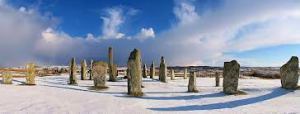
From those childhood experiences on, I have walked the well trodden path underlying all faiths which seeks ways of affirming connection with that vast Power which runs nature, the Universe and everything, reconciling dark and light, going way beyond time.
Whilst reflecting on the profoundly mysterious and paradoxical relationship between light and dark, with which we humans have always wrestled in one form or another, the phrase ‘dazzling darkness’ came to mind. It persisted for days, until eventually I located the source.
It occurs in a fascinating article, which I had first read in 2002, titled “A RELUCTANT MYSTIC: God-Consciousness not Guru Worship” by John Wren-Lewis. ( from Self & Society Vol 29 Number 6 Feb-March 2002 (pp 22-24)
The author describes how, at the age of nearly sixty, retired and with a distinguished career as a scientist behind him, he had spiritual consciousness “thrust upon me….without working for it, desiring it, or even believing in it.”
It was 1983. Wren-Lewis was in Thailand, in a hospital bed, hovering between life and death, having eaten a poisoned sweet given to him by a would-be thief. What happened next, a ‘near death experience’(NDE), he describes as follows:
“I simply entered – or rather, was – a timeless, spaceless void which in some indescribable way was total aliveness – an almost palpable blackness that was yet somehow radiant. Trying to find words for it afterwards, I recalled the mysterious line of Henry Vaughan’s poem The Night: ’There is in God, some say, a deep and dazzling darkness’….”
His return to life, as the medical staff gradually won their battle to save him, was not in any way accompanied by the typical NDE’s classic sense of regret or loss at having to go back to the world of the everyday. It was, in fact, “nothing like a return….more like an act of creation whereby the timeless, spaceless Dark budded out into manifestation”. Furthermore, the experience was “indescribably wonderful.”
In Wren-Lewis’ own words “I now know exactly why the Book of Genesis says that God looked upon all that He had made – not just beautiful sunsets, but dreary hospital rooms and traumatised sixty-year old bodies – and saw that it was very good.”
Moreover, this heightened awareness did not leave him. A permanent shift, without any effort at all, into what he calls “God-consciousness” caused him to do further reading and research beyond accounts of NDEs into the “once-despised world of mystical literature and spiritual movements”.
But he rejects the notion held by experts in many religious traditions that the path to God-consciousness, or Enlightenment, or Nirvana requires years or even lifetimes of intensive spiritual effort. After all, he’d been handed “the pearl of great price on a plate” without ever seeking it, and found God-consciousness to be quintessentially ordinary and obvious – a feature emphasised by many mystics.
I was so intrigued by Wren-Lewis’ startling account that I re-read the great Victorian psychologist William James’ classic book “The Varieties of Religious Experience” for the first time in nearly thirty years. This confirmed what I had already known but forgotten: a great many people who have profound religious or mystical experiences have them in nature.
I felt grateful then for my powerful and threatening experience that winter’s night in early childhood. The awesome power of nature, had circumstances been a little different, could have taken my life from me then before it had even begun. And for those brilliant encounters with the Northern Lights, so long ago but still clearly remembered. They affirmed my need for ‘God consciousness’ – long before I could ever articulate it coherently for myself.
We need awe: it points our vision towards the sacred. So, readers, embrace the darkness if you can, this winter’s Christmas Eve – you never can tell what wonders may reveal themselves ….

River Kelvin Dec 2010
FESTIVE GREETINGS EVERYONE! THANKS FOR YOUR CONTINUING SUPPORT VIA VISITS, COMMENTS AND EMAILS – AND MAY 2014 BE A FULFILLING YEAR.
*****
950 words copyright Anne Whitaker 2013
Licensed under Creative Commons – for conditions see Home Page
Filed under: 01 - New Posts: October 2012 onwards, Festive Greetings : 2009, 2010, 2011, 2012,2013 Tagged: Book of Genesis, Christmas, God, Henry Vaughan, John Wren-Lewis, NDE, Near Death Experience, Thailand, William James, Winter, Wren-Lewis


December 21, 2013
Winter Solstice: an evocative poem
Tonight we will flick drops of malt whisky onto our fully lit and decorated tree on the night of the Winter Solstice. Midwinter magic has returned!We do this every year – and every year I remind family members present for the ritual that this tree has a very ancient pedigree. Looking for a poem which captures both the feeling and the history, I found this one to share with you, wherever you are this night:
Ancient Akkadians honouring their Tree of Life
The Shortest Day by Susan Cooper
So the shortest day came, and the year died,
And everywhere down the centuries of the snow-white world
Came people singing, dancing,
To drive the dark away.
They lighted candles in the winter trees;
They hung their homes with evergreen;
They burned beseeching fires all night long
To keep the year alive,
And when the new year’s sunshine blazed awake
They shouted, reveling.
Through all the frosty ages you can hear them
Echoing behind us – Listen!!
All the long echoes sing the same delight,
This shortest day,
As promise wakens in the sleeping land:
They carol, fest, give thanks,
And dearly love their friends,
And hope for peace.
And so do we, here, now,
This year and every year.
Welcome Yule!!
******************************
200 words copyright Anne Whitaker/Susan Cooper 2013
Licensed under Creative Commons – for conditions see Home Page
******************************
Filed under: 01 - New Posts: October 2012 onwards, Festive Greetings : 2009, 2010, 2011, 2012,2013 Tagged: Christmas Tree, Holidays, New Year, Northern Hemisphere, Shortest Day, Susan Cooper, Winter Solstice, Yule


December 19, 2013
Where is this place called ‘elsewhere’?
‘The human comedy doesn’t attract me enough. I am not entirely of this world….I am from elsewhere. And it is worth finding this elsewhere beyond the walls. But where is it?’
The pull of elsewhere has dominated my life. As a child, lying tucked up cosy and warm in bed, listening to the wind beyond our walls tearing the world apart, I used to luxuriate in the contrast between in here and out there – and wonder where the Power came from to cause the winds to rage, and the sea to beat endlessly against the coastline of my native island.
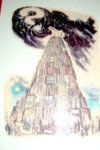
The Big ‘Why?‘
It would take me a long time beyond childhood to understand and accept that my obsession with the big “Why?”, from the moment I opened my eyes to the world, is not the norm for most of humanity. Sensibly, they just want a quiet uncomplicated life.
Apart from my maternal grandfather, a loving and very broad-minded Christian – ‘remember, child: whatever our race, colour or creed we are all God’s children’ – nobody knew what went on in my head and heart throughout my entire childhood.
There is no such thing as one biography of a life.
Your perspective changes with the passage of time and the way life’s inevitable challenges are dealt with. You rewrite your own history in your head all the time, mostly without realising it. For example, I never understood the full extent of elsewhere’s pull until my mid-life descent into and return from the Underworld, a period which lasted seven years – undoubtedly the most difficult and the richest time of my whole life. I feel in better relation now to that mysterious elsewhere than ever before.
To me, elsewhere is the vast wave of which everything – universe, cosmos, galaxies, planets, Earth, all life forms – is a droplet. We arise from elsewhere, and that is where we return. Call it the quantum vacuum, the Zero Point Field, God, Buddha, Krishna, the Ground of our being, the Source, the One: the name we give it does not matter.
I have also learned that elsewhere is not somewhere else. It is here, present, now, everywhere – always.
*******
(headline quote is from Eugene Ionesco:quoted in Philip Yancey’s “Reaching for the Invisible God” p25)
******************************
400 words copyright Anne Whitaker 2013
Licensed under Creative Commons – for conditions see Home Page
******************************
Filed under: "Our deeply strange existence", 01 - New Posts: October 2012 onwards Tagged: Buddha, Facebook, Gautama Buddha, God, Krishna, Philip Yancey, philosophy, Physics, Twitter, Vacuum state


December 17, 2013
Advent Quote: “This being human” by Rumi
I thought it would be appropriate to offer a reflective piece of poetry as this especially tempestuous year ends: we need all the wisdom we can receive, especially in relation to the dark thoughts, the shame and the malice from which no person is immune – could we but take responsibility for those shadow qualities in ourselves as individuals and nations, refraining from projecting them onto others, the world would probably be less fractured than it is….
“This being human” is by far the most popular and most often read of all the quotes I have posted on my blog in the last few years. Here it is once more. It holds so much wisdom.
” This being human “
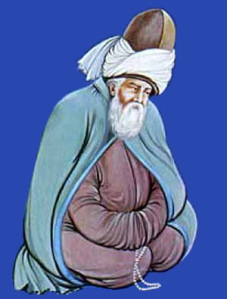
The poet Rumi
This being human is a guest house.
Every morning a new arrival.
A joy, a depression, a meanness,
some momentary awareness comes
as an unexpected visitor.
Welcome and entertain them all
even if they’re a crowd of sorrows,
who violently sweep your house
empty of its furniture.
Still treat each guest honourably,
he may be clearing you out
for some new delight.
The dark thought, the shame, the malice,
meet them at the door laughing,
and invite them in.
Be grateful for whoever comes,
because each has been sent
as a guide from beyond.
from the Persian poet Rumi
(1207-1273)
Filed under: 01 - New Posts: October 2012 onwards, Favourite Quotes (archive) Tagged: Arts, Guest house, Konya, New Year, Persian language, Rumi, Sufism



